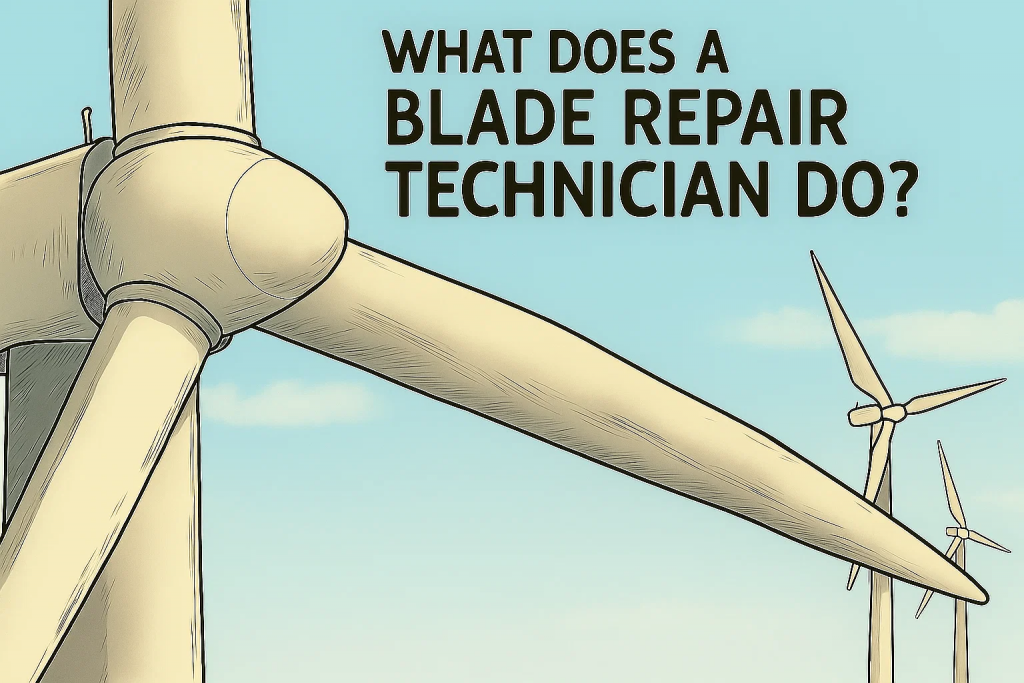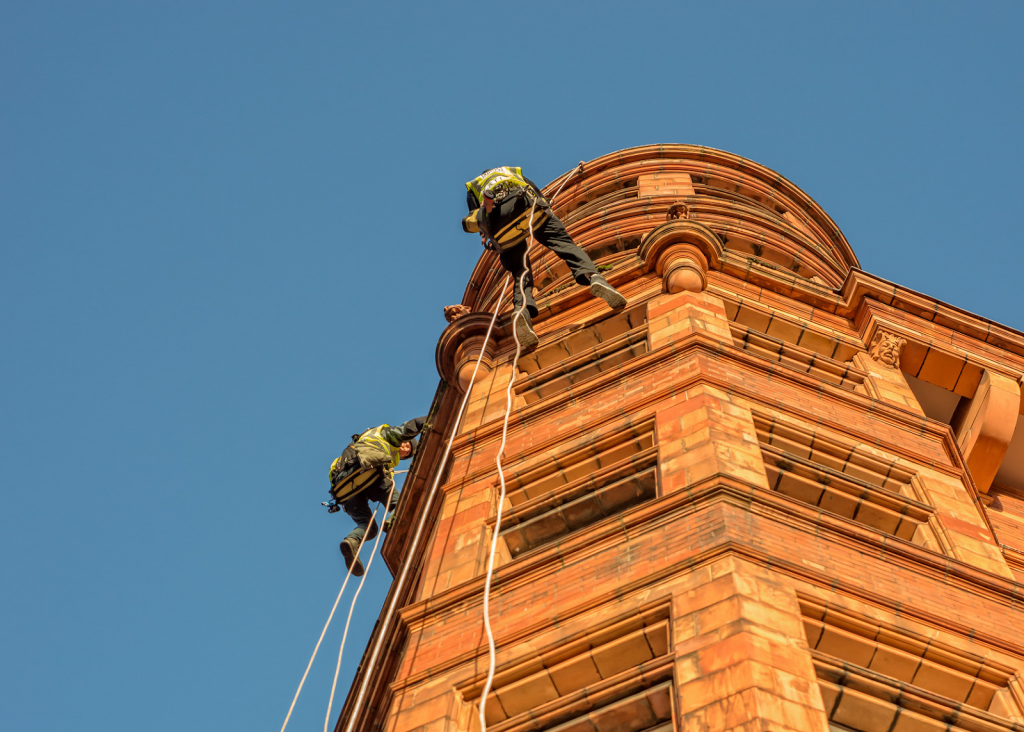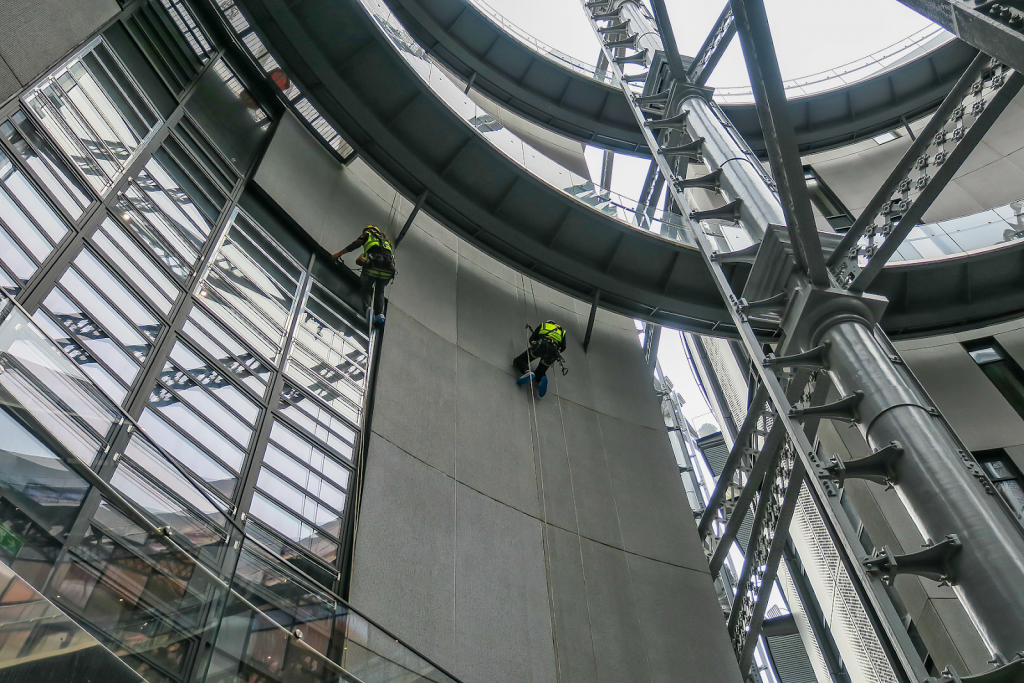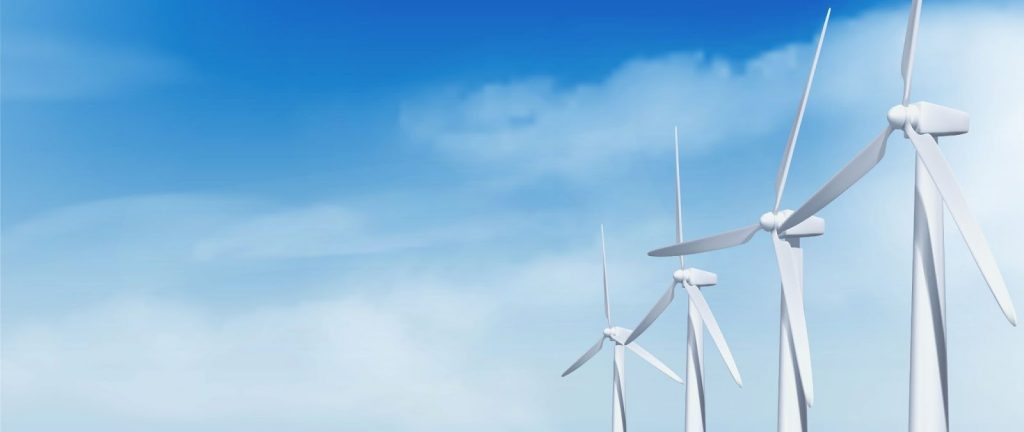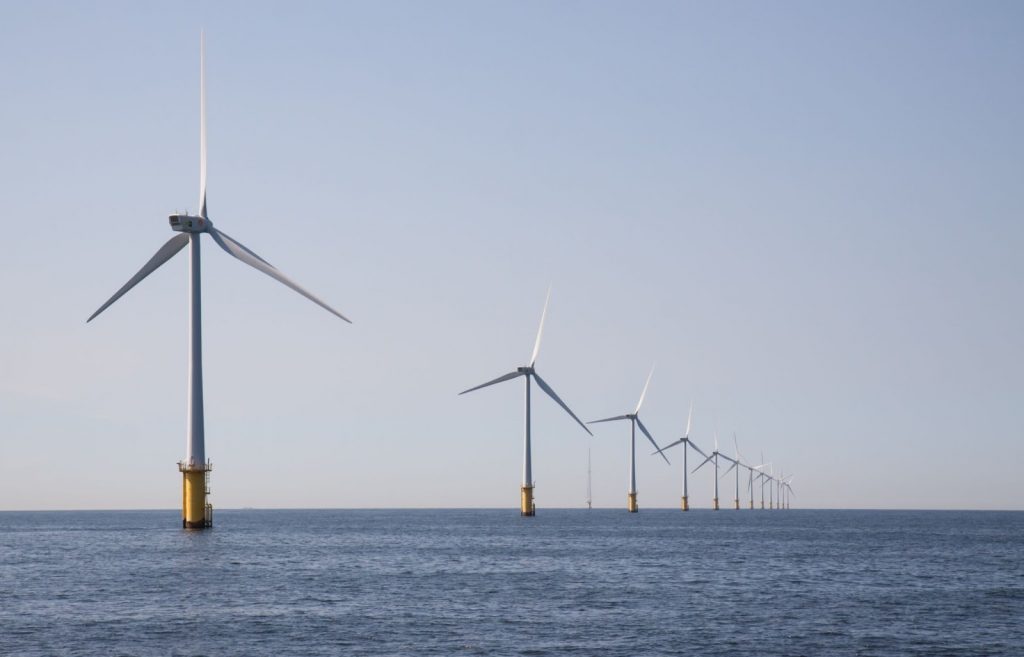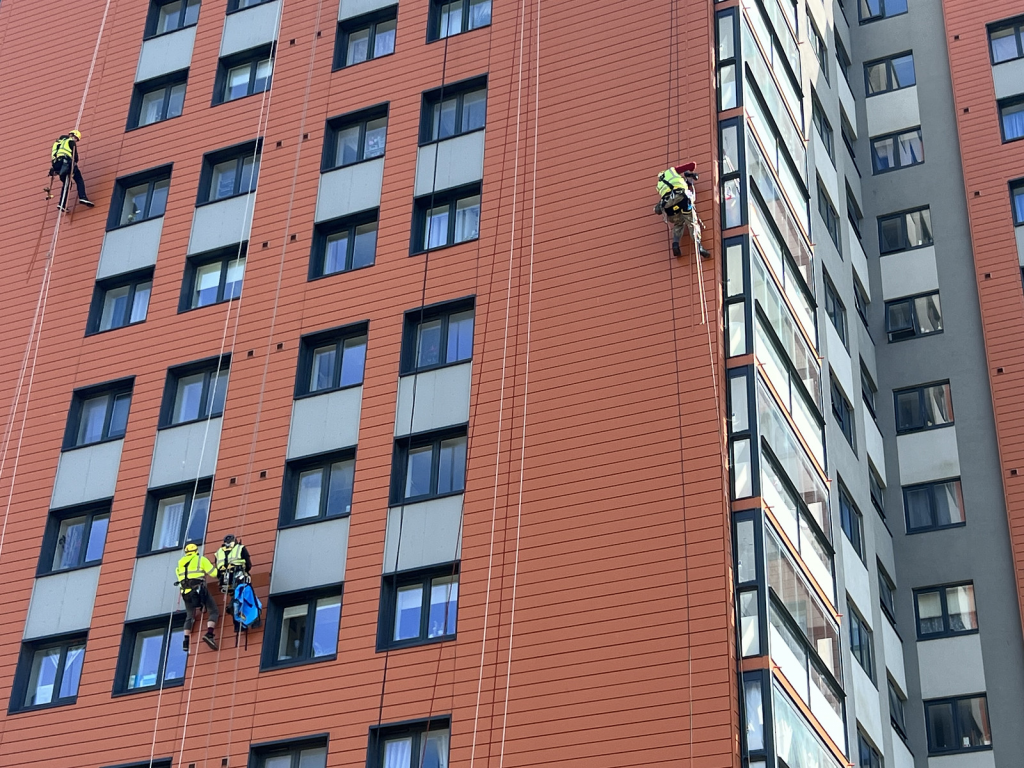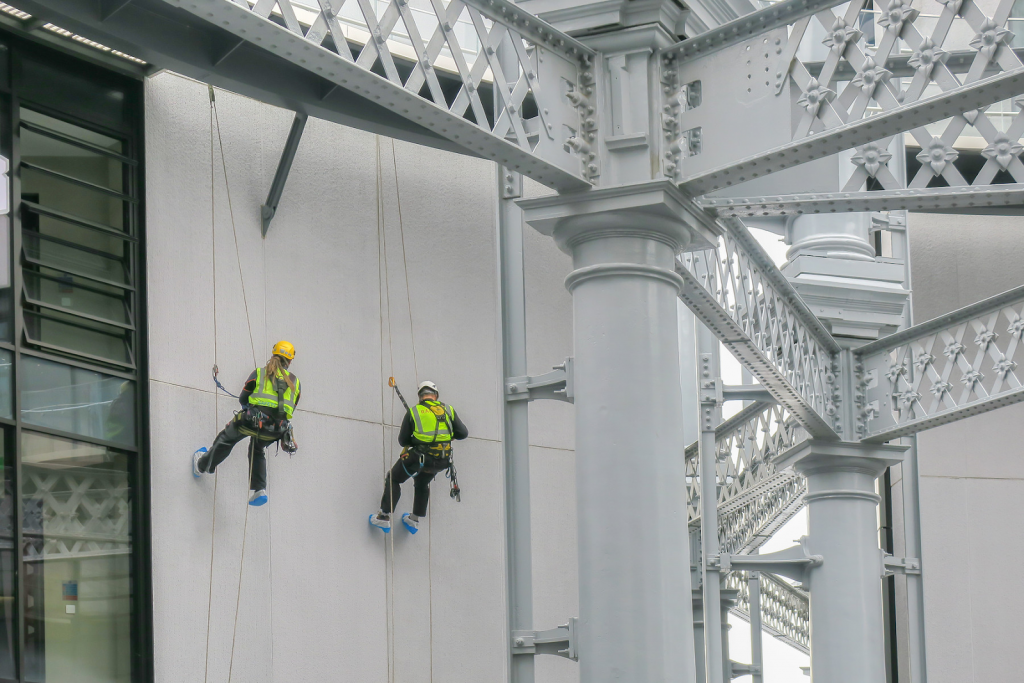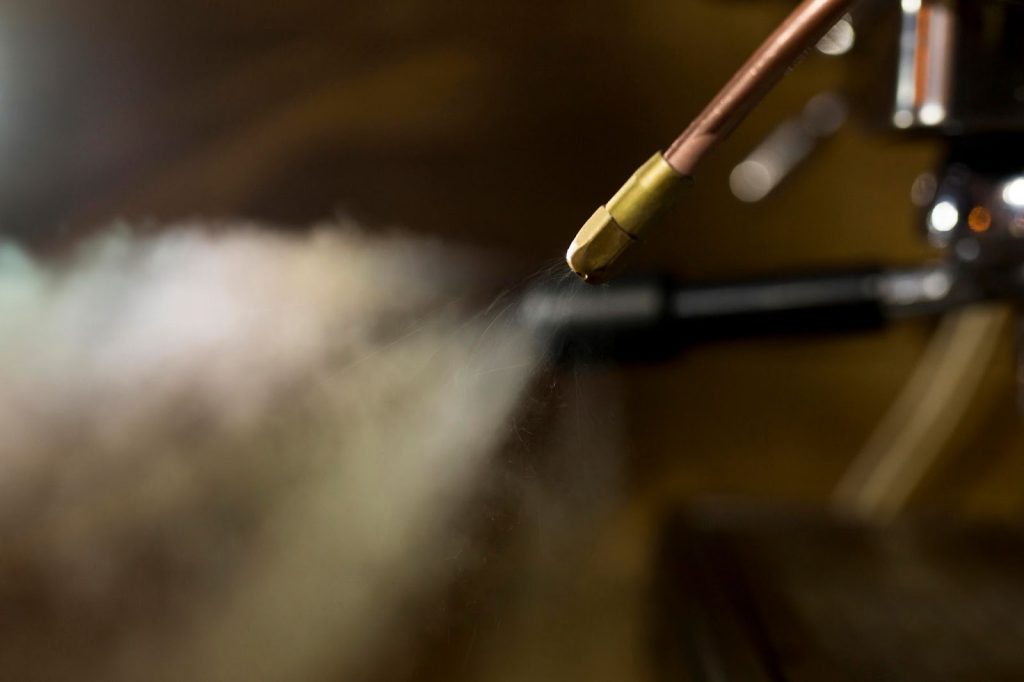
The renewable energy sector is booming across the UK. As a result, wind farms dot our coastlines and countryside.
However, these structures require constant maintenance to keep spinning efficiently.
Blade repair technicians keep our wind turbines operational and productive. They work at dizzying heights and battle harsh weather conditions to ensure that wind turbines continue generating clean electricity for millions of homes across Britain.
At Rope Access in London (RAIL), we’ve been providing industrial maintenance services for years. We offer comprehensive wind turbine maintenance through our specialist technicians.
Our team includes skilled welders, electricians, painters, and cleaners who understand the unique challenges of working on these massive structures.
But what exactly does a blade repair technician do? Let’s explore this subject.
What Exactly Does a Blade Repair Technician’s Daily Work Involve?
A blade repair technician’s role extends far beyond simple repairs. These professionals are responsible for maintaining the three massive blades that capture wind energy.
Each blade can measure over 80 metres in length. Plus, they weigh several tonnes.
Comprehensive Blade Inspection and Assessment
The day typically begins with thorough visual inspections. Technicians examine each blade surface for cracks, erosion, or damage.
We offer detailed surveying services that extend to wind turbine structures. Our technicians document every imperfection. They photograph damaged areas, measuring the lengths and depths of the cracks.
Advanced inspection techniques involve specialised equipment. Technicians use ultrasonic testing devices and thermal imaging cameras to detect internal damage that isn’t visible to the naked eye.
Structural Repairs and Reinforcement
When damage is discovered, immediate action is required. Blade repair technicians perform various repair techniques depending on the problem’s severity.
- Surface cracks might require simple resin injection.
- Deeper structural damage demands more complex solutions.
Composite repair work forms the backbone of blade maintenance. Technicians apply fibreglass patches and use carbon fibre reinforcement materials.
They work with specialised adhesives designed for high-stress environments. Each repair must withstand extreme wind forces and temperature fluctuations.
Protective Coating and Weatherproofing Applications
British weather is notoriously unpredictable. Wind turbine blades face constant exposure to rain, sleet, snow, and salt spray from coastal locations.
That’s why protective coatings are essential for long-term durability.
These materials resist UV degradation. They also prevent water ingress and help maintain aerodynamic efficiency.
The painting process requires perfect surface preparation and precise application techniques.
Our painters understand the unique requirements of these applications. They work with industry-approved materials and follow strict quality control procedures.
The Soaring Global Demand for Blade Repair Technicians
As nations strive to meet climate goals and reduce their carbon footprint, the number of wind farms is increasing. It makes the role of rope access technicians more critical than ever.
The global wind energy market is experiencing significant growth. In 2024, the market size was valued at USD 174.5 billion and is projected to expand at a compound annual growth rate of over 11.1% from 2025 to 2034.
Major developments are occurring in Asia, Europe, and North America. China, in particular, has become a dominant force, accounting for 72% of the global market for new wind turbines in 2024.
This surge in wind turbine installations directly translates to a heightened need for maintenance and repair services.
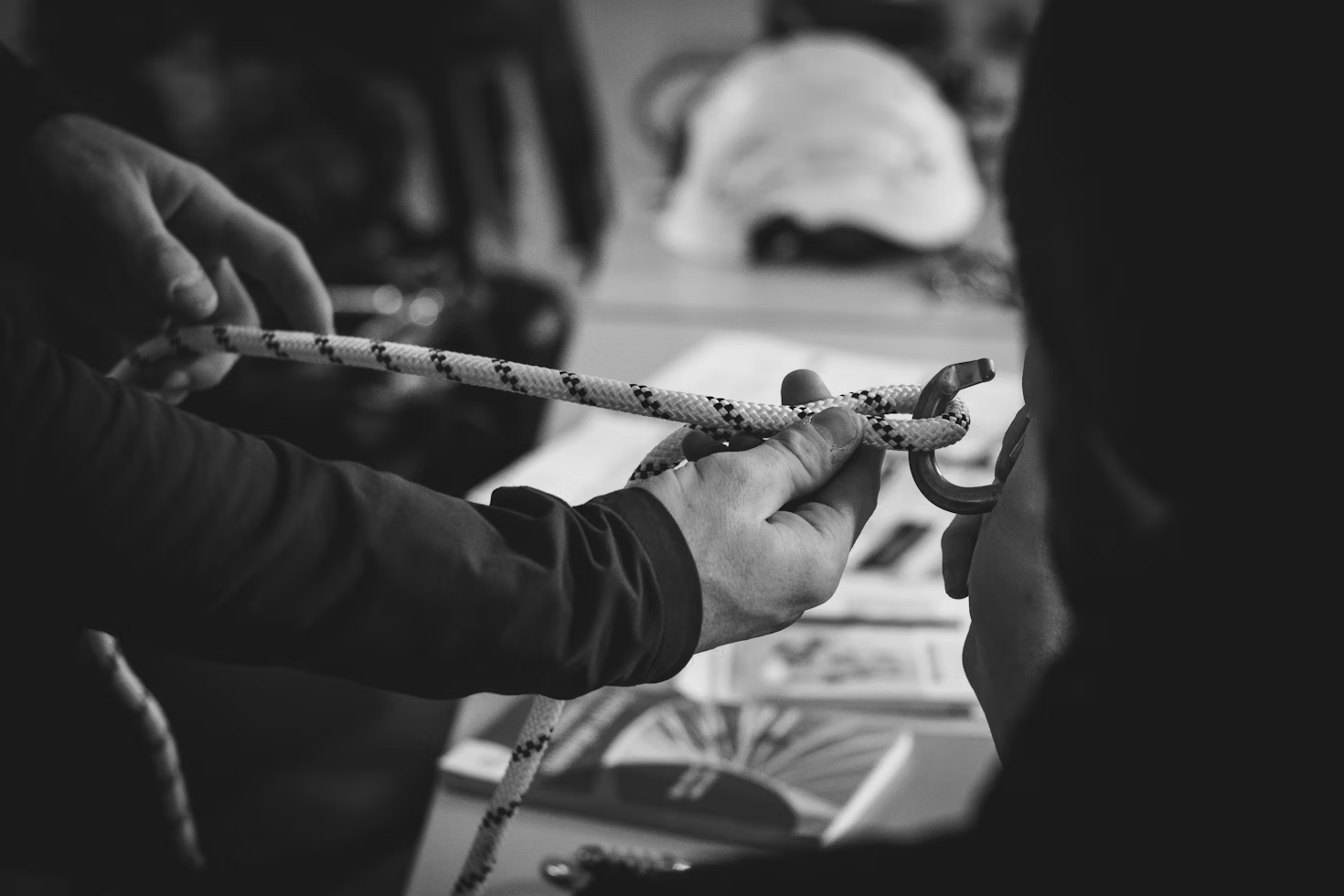
How Do Blade Repair Technicians Access These Towering Structures Safely?
Working at heights exceeding 100 metres presents enormous safety challenges. Traditional scaffolding is impractical for wind turbines. Cherry pickers can’t reach these heights. Helicopter access is expensive and weather-dependent.
This is where rope access techniques become invaluable.
Rope Access: The Preferred Method for Wind Turbine Maintenance
Rope access represents the most efficient method for reaching wind turbine blades. Technicians use industrial climbing techniques adapted from mountaineering and caving.
They abseil down from the turbine nacelle and work suspended on ropes while performing repairs.
At RAIL, we offer comprehensive rope access services for oil and gas rigs as well as wind turbines. Our technicians are fully certified and experienced in working at extreme heights.
Safety Protocols and Risk Management
Safety protocols for blade repair work are extraordinarily stringent. Weather conditions dictate when work can proceed. Wind speeds above certain thresholds ground all operations. Rain, ice, or electrical storms halt work immediately.
Personal protective equipment includes multiple layers of safety systems. Technicians wear full-body harnesses, use certified helmets with chin straps, and carry emergency rescue devices.
Communication systems maintain constant contact with ground teams.
Specialised Equipment and Tools
Blade repair technicians use an extensive array of specialised tools.
- Lightweight composite materials require specific cutting instruments.
- Pneumatic sanders prepare surfaces for coating applications.
- Injection guns deliver resin into crack systems.
Tool security becomes critical when working at height. Everything must be tethered or secured. Dropped tools pose serious safety risks to ground personnel.
What Skills and Qualifications Are Essential for Blade Repair Success?
Becoming a competent blade repair technician requires diverse skills and extensive training. The role combines traditional trades with cutting-edge technology.
Technical Competencies and Trade Skills
Composite materials expertise forms the foundation of blade repair work. Technicians must understand fibreglass properties and resin chemistry, among others. They also must master laminating techniques under challenging conditions.
We employ specialist technicians from various trade backgrounds.
- Our welders bring metallurgy knowledge to blade hub maintenance.
- Our electricians handle lightning protection systems and monitoring equipment.
- Our painters apply protective coatings with precision.
Physical Requirements and Fitness Standards
The physical demands of blade repair work cannot be overstated. Technicians must possess excellent upper body strength. At the same time, they need outstanding balance and coordination.
Height tolerance is absolutely essential. Some people discover their limits only when suspended 100 metres above ground. Acrophobia disqualifies potential technicians immediately.
Weather resistance becomes crucial for outdoor industrial work. British conditions range from scorching summer heat to bitter winter cold. Rain, wind, and snow are occupational hazards. Technicians must maintain performance despite challenging conditions.
Certification Requirements and Continuing Education
Industrial rope access certification is mandatory for wind turbine work. The Industrial Rope Access Trade Association (IRATA) sets international standards.
Technicians progress through three levels of certification. Each level requires practical assessment and theoretical knowledge.
We ensure all our rope access technicians maintain current IRATA certification. We offer ongoing training opportunities for skill development and invest in the latest techniques and equipment to maintain competitive advantages.
Problem-Solving Abilities and Innovation
Every blade repair presents unique challenges. After all, damage patterns can vary significantly.
Successful technicians adapt quickly to changing circumstances. Similarly, diagnostic skills separate good technicians from great ones.
We’ll identify root causes and prevent recurring problems.
The Economic Impact of Effective Blade Maintenance
Wind turbine blade maintenance carries significant economic implications. All of these are positives, though.
Efficient repairs maintain energy production. Preventive maintenance extends turbine lifespan. Proper techniques minimise future problems.
Production Efficiency and Revenue Protection
Every hour of downtime costs wind farm operators money. Lost electricity generation affects revenue streams. The same goes for delayed repairs, which compound problems and increase costs.
We understand the economic pressures facing wind farm operators. That’s why we offer rapid response services for emergency repairs. Our efficient rope access techniques minimise downtime.
We prioritise getting turbines back online quickly.
Environmental Benefits of Proper Maintenance
Well-maintained wind turbines generate maximum clean energy as efficient blades capture more wind power.
We’re committed to supporting renewable energy development. Our maintenance services help wind farms achieve their environmental goals.
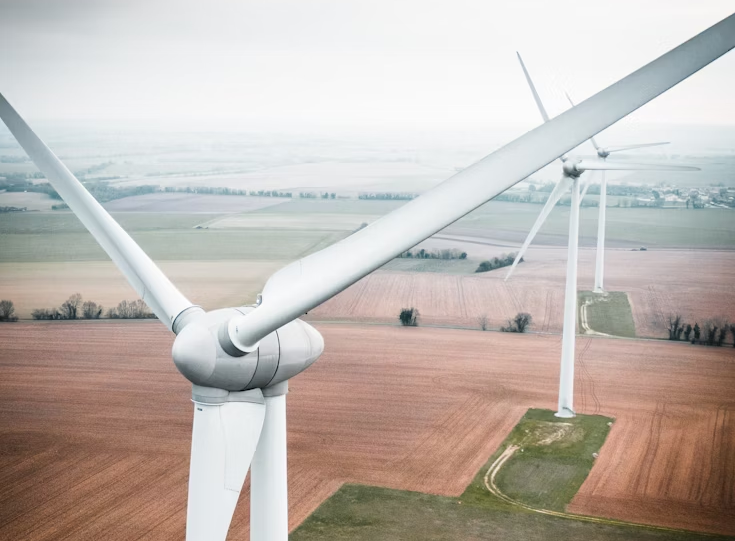
What Are the Most Frequently Encountered Issues for Blade Repair Technicians?
Wind turbine blades are constantly subjected to immense stress from harsh weather and relentless operational demands.
This operational environment makes them susceptible to various types of damage.
1. Leading-Edge Erosion
Perhaps the most common issue technicians face is leading-edge erosion. It occurs as a result of the blade’s constant impact with airborne particles like rain, hail, sand, and insects.
The leading edge, particularly near the blade tip, which moves at the highest speeds, experiences this wear most intensely.
The primary cause of this erosion is the repetitive impact of raindrops, which, at high rotational speeds, can strike the blade with significant force, gradually wearing away the protective outer layers. This roughening of the blade’s surface disrupts its aerodynamic profile, which can reduce the turbine’s annual energy production by up to 5%.
If left unaddressed, the erosion can penetrate deeper into the blade’s composite structure, leading to more severe damage like cracks and water ingress.
2. Lightning Strikes
Due to their height and placement in open areas, wind turbines are frequent targets for lightning strikes. Modern blades contain a Lightning Protection System (LPS) with receptors and down conductors, but these systems are not infallible, and damage can still occur.
Lightning can cause a range of problems, from small burn marks and punctures on the blade’s surface to significant structural damage. The intense heat from a strike can vaporise parts of the internal conductor cable, rendering the LPS ineffective for future strikes.
A direct strike can lead to delamination, where the composite layers separate, causing the blade tip to split or be blown off entirely.
The subsequent repair costs and turbine downtime make lightning strikes one of the most significant and expensive issues for wind farm operators.
3. Cracks and Structural Failures
Technicians regularly inspect for and repair cracks. These can appear for several reasons, including:
- material fatigue from the millions of rotational cycles
- extreme wind loads
- as a consequence of other damage like erosion or lightning strikes
Cracks can be found anywhere on the blade but are often located at the trailing edge, near the blade root where stresses are high, or in areas with manufacturing defects.
These fissures can start small on the surface but may propagate over time, compromising the blade’s structural integrity and potentially leading to catastrophic failure.
4. Delamination and Debonding
- Delamination is the separation of the layers of composite material from which the blade is constructed. It’s often the result of manufacturing defects, stress during operation, or moisture getting inside the blade.
- Debonding refers to the failure of the adhesive joints that hold different sections of the blade together, such as where the two main shells are joined.
Both delamination and debonding weaken the blade’s structure. An open bond line can allow moisture to penetrate deep into the blade, which can freeze and expand in colder climates, causing further damage.
These issues require meticulous repair to restore the blade’s structural strength.
The Bottom Line
Blade repair technicians play a vital role in Britain’s renewable energy future. Their skilled work keeps wind turbines generating clean electricity.
The profession demands physical fitness, technical expertise, and problem-solving abilities.
For wind farm operators, choosing experienced maintenance providers is crucial. Professional services ensure safety and regulatory compliance.
At RAIL, we’re proud to support the renewable energy sector through our industrial services. Our technicians bring diverse skills to every project.
We maintain the highest safety standards while delivering efficient, effective solutions.
Frequently Asked Questions
How long does it typically take to complete a full blade repair?
Repair duration varies depending on damage extent and weather conditions. Minor surface repairs might take 2-4 hours per blade. Major structural damage could require several days of work.
The most complex repairs involving multiple damage sites may extend over weeks. Weather delays often affect scheduling more than the actual repair work itself.
What happens to old wind turbine blades when they reach the end of life?
End-of-life blade disposal presents environmental challenges due to composite materials. Current options include mechanical recycling into cement production additives, pyrolysis processes that recover fibres and energy, and emerging chemical recycling techniques.
Some companies explore repurposing blades for playground equipment, bridges, or architectural features.
Do blade repair technicians work year-round or seasonally?
Blade maintenance occurs throughout the year, though work patterns vary with seasons. Winter months often limit outdoor work due to severe weather conditions.
Emergency repairs happen regardless of season when turbine safety or production is at risk.
